Rollers vs indoor bike trainers: which is best for you?
Indoor bike trainers might get the most attention – but don't underestimate a humble set of rollers, here's why...
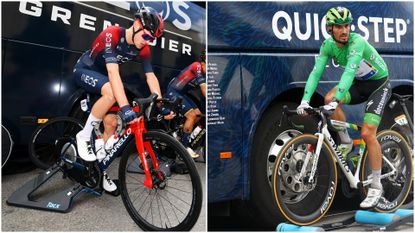

A couple of years ago, I decided that I was allergic to indoor bike trainers (turbo trainers).
The discovery of my unfortunate affliction occurred after several angst filled weeks where, following a new FTP test result, I just couldn't hit the power values during intervals set by cycling training zones. Using a wheel on, magnetic resistance unit, I repeatedly found myself hitting a physi-mental wall and pressing 'pause', much to the understandable horror of the coach who had devised the sessions.
Before throwing in the towel and adjusting the numbers, I decided to give the same sessions a go on my trusty rollers - and suddenly it all became easy. By easy, I mean I was still hitting 193 bpm at the end of the first interval, but I could finish the set without entering a state of emotional and physical turmoil.
Technology has since progressed. Indoor bike trainers now feature heavy flywheels which create a more realistic feeling of inertia, and as a result I now flit between the turbo trainer and rollers depending upon the requirements of the session. If it's a high power sprint cycling workout, I'll always go for a direct drive turbo, whilst an easy recovery ride or a 'sweetspot' training session where boredom is the most likely enemy will be carried out on the rollers.
Not everyone has the option of choosing between the two as the session dictates, so if you're going to buy and and store only one, which are you better off going for - one of the best bike rollers or the best turbo trainers?
And if you are totally new to indoor bike training, our beginner's guide to indoor cyclinghas everything else you need to get you up and running.
Pros and cons of bike rollers
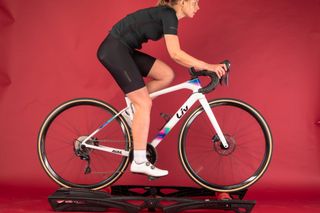
Rollers consist of three drums, where the second and third rotators are connected via a 'belt'. Once you start pedalling, the rollers move beneath you.
Get The Leadout Newsletter
The latest race content, interviews, features, reviews and expert buying guides, direct to your inbox!
Learning to use the rollers takes a bit of practice - most people start by positioning themselves between a doorframe, which limits the likelihood of coming a cropper. In time, you'll find you grow in confidence, and can test yourself with tasks like grabbing a bottle from the cage or riding no handed.
Beginner's guide to riding the rollers
Traditionally, rollers have been very simplistic, you can pick up a set from about $170 / £150 but the resistance levels are limited, meaning that efforts far above 120/150 per cent of FTP can be difficult to sustain. Previously most pairs of rollers didn't have any form of connectivity to be used with the best indoor training apps for cycling.
However, there are a couple of 'smart' bike rollers options now - the Elite Arion Digital Smart Rollers use Ant+ as well as Bluetooth Smart and can withstand up to 1100 watts or replicate gradients of 20 per cent.
The Wahoo Kickr Rollr can withstand even more power, 1500w, albeit simulating gradients up to a slightly shallower 10 per cent.
Clinical bike fitting expert at Velo Aterlier, Lee Prescott is a big fan of the drums. He said: “I know rollers can take a little getting used to but once you have mastered them they offer so many benefits compared to fixed smart trainers.
"From a biomechanics viewpoint the motion you go through whilst pedalling is far more realistic in terms of the actual musculature used. Your core muscles get some strength and conditioning due to the more natural rythmic rocking and the necessary stabilisation they provide [when on the rollers].”
He added: “It's not just the muscles getting a better work out than on an indoor bike trainer. On rollers your balance and proprioception also get honed during your session, as your body naturally enters an unconscious competence phase and your muscle memory takes over.”
Pros of rollers
- Get on without any need to remove wheels or swap tyres
- Encourages good pedalling technique to remain upright
- Trains the full body as core needs to be engaged
- Smoother feeling which can mimic the road more accurately
- Usually easier and lighter to transport (good for race warm-ups)
Cons of rollers
- Takes practice, so unless you're accustomed, may limit fitness focus for a couple of sessions - this doesn't apply to less traditional designs such as Wahoo's Kickr Rollr
- On all but the more expensive versions, resistance is limited
- Only more expensive versions connect with apps via Ant+ and Bluetooth
- Concentration is required so sessions where physical effort eclipses all mental process may not be possible
- Most people can't get out the saddle so - aside from high cadence spin-outs - sprints are off the cards
Pros and cons of indoor bike trainers

Indoor bike trainers (turbo trainers) are by far the more popular choice.
There's now three distinct options: a basic trainer which simply attaches to the bike to allow the user to pedal away, a wheel-on smart trainer which does the same but adjusts resistance to suit a workout and measures power, and a direct drive smart turbo where the rear wheel is removed creating a sturdy base.
On a direct drive smart turbo, a heavy freewheel offers a better ride feel and allows for all-out sprinting.
Our wheel-on vs direct drive turbo trainers page weighs up the pros and cons of both.
You can pick up a basic indoor bike trainer from around $120 / £100, and a 'wheel on' smart trainer from around $300 / £250. Direct drive smart trainers start at around $700 / £500.
Regardless which option you choose, indoor bike trainers don't require a time investment in 'learning to ride' them, you just get on and pedal. You can focus all your attention on the efforts, and there's zero chance of falling off. You can get out the saddle and sprint, even more so on a direct drive model.
Smart trainers connect to apps like Zwift, Wahoo X and TrainerRoad to adjust the resistance in response to hills, descents, or efforts during a session - though you can turn this off by disabling ERG mode.
According to Zwift's PR manager, Chris Snook, around 80 per cent of the platform's users are competing their sessions on smart trainers.
"I enjoy both [rollers and the turbo], but my preference is the smart trainer," Snook said. "I always have mine setup with a bike on it at home and I can just hop on Zwift in minutes. The smart trainer for me is better for racing on Zwift. It also provides a greater amount of resistance which means I can do a broader range of workouts - including sprint intervals."
Wahoo SYSTM's Dylan Robbins told us he reckoned around 98 per cent of Sufferlandrians were journeying to the fields of lava and gnashing of teeth (and back) on indoor bike trainers.
"Unless you have new-fangled rollers with a resistance unit it's difficult to hit power targets with rollers," Robbins said. "There's also a much steeper learning curve with rollers so most people who are looking for an indoor training solution will most likely go for a trainer since they can hop on and go.
"It's also nigh impossible to do all-out efforts on rollers without significant tooth loss so sprint workouts are pretty much off the table.
"Before I started doing much in the way of structured training indoors I preferred rollers since my primary motivation for riding inside was to improve my form and pedal stoke. Rollers are brutally honest. They throw any choppiness in your pedal stroke into high relief and force you to really focus on keeping things smooth.
"But in terms of allowing you to really nail a structured workout with highly-variable power and cycling cadence targets they're not ideal."
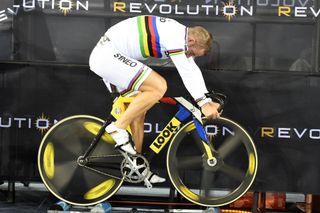
We've looked at the pros and cons of smart as opposed to basic indoor bike trainers, since that's what the majority is now using...
Pros of smart indoor bike trainers
- Provide power data, handy if you don't have a separate power meter
- All will pair up with apps to adjust resistance
- Can reach high efforts and sprint just as hard (if not harder) than on the road
- All the effort can go completely into the bike
Cons of smart indoor bike trainers
- Little need for upper body or core to work unless you consciously engage them
- Non-direct drive versions can feel quite 'draggy', direct drive versions are still quite expensive
The verdict
If you only have the space or money for one, and want to be able to use your full range of training zones, it seems like it's going to have to be an indoor bike trainer.
However, if you've got space in your life for both, plan to do all of your sprints and hill efforts outdoors, or you're an endurance specialist who just doesn't need to enter the absolute red, then rollers are a great way to add variety and keep it interesting. Plus, they won't feel like you're churning through a rock garden, as per the very oldest of cheap indoor bike trainers.
If you want the best of all worlds and money is no object? One of the best exercise bikes and smart indoor bikes might be your calling...
In answer to the question, 'what's the ultimate setup for training and racing on Zwift?', we compared the qualities of smart bikes and top-end turbos.

Thank you for reading 20 articles this month* Join now for unlimited access
Enjoy your first month for just £1 / $1 / €1
*Read 5 free articles per month without a subscription

Join now for unlimited access
Try first month for just £1 / $1 / €1
Michelle Arthurs-Brennan the Editor of Cycling Weekly website. An NCTJ qualified traditional journalist by trade, Michelle began her career working for local newspapers. She's worked within the cycling industry since 2012, and joined the Cycling Weekly team in 2017, having previously been Editor at Total Women's Cycling. Prior to welcoming her daughter in 2022, Michelle raced on the road, track, and in time trials, and still rides as much as she can - albeit a fair proportion indoors, for now.
-
 'It's a surreal experience' - Meet the British teenager racing with his heroes
'It's a surreal experience' - Meet the British teenager racing with his heroesOli Peace is stepping up in his first pro race at the Tour of the Alps
By Tom Davidson Published
-
 A closer look at the 'disruptive' Ribble Rebellion crit bike: part artwork, part race machine
A closer look at the 'disruptive' Ribble Rebellion crit bike: part artwork, part race machineThe Ribble Rebellion team is riding an eye-catching bike for 2024, in more ways than one
By Joe Baker Published
-
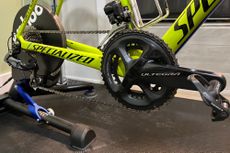 Indoor trainers damage carbon bikes, and 5 other indoor cycling lies uncovered
Indoor trainers damage carbon bikes, and 5 other indoor cycling lies uncoveredCommon cycling trainer misconceptions debunked
By Greg Kaplan Published
-
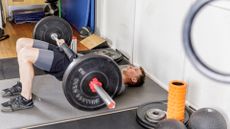 Does gym work really benefit your cycling fitness? Here’s how to mix up your training and reap the gains
Does gym work really benefit your cycling fitness? Here’s how to mix up your training and reap the gainsNo time for long winter miles outdoors but can’t face yet another turbo session either? Despair not! Coach Landry Bobo has an alternative winter plan to answer your prayers
By Landry Bobo Published
-
 Best indoor training apps for cycling: virtual riding platforms and training analysis apps
Best indoor training apps for cycling: virtual riding platforms and training analysis appsWhether it’s virtual racing and riding or training tracking, planning and analysis, there are plenty of options to choose from - here’s our top picks
By Tom Epton Last updated
-
 Lab to living room: How to benchmark your cycling fitness at home
Lab to living room: How to benchmark your cycling fitness at homePhysiological testing is no longer the preserve of the sports science lab. Hill-climb champion and coach Tom Bell explains how to measure your key benchmarks from the (dis)comfort of your home
By Tom Bell Published
-
 Here are the best Sufferfest workouts to kickstart your indoor training
Here are the best Sufferfest workouts to kickstart your indoor trainingFrom the outside, The Sufferfest may look like a scary place to train.
By Alex Ballinger Published
-
 A cyclist’s guide to self-isolation
A cyclist’s guide to self-isolationNeed inspiration for cycling based activities during quarantine? Look no further
By Stuart Clarke Published
-
 The Sufferfest launches training plans tailored for eRacing demands
The Sufferfest launches training plans tailored for eRacing demandsIndoor racing is short and punchy - these plans aim to get your form nailed
By Michelle Arthurs-Brennan Published
-
 Six signs you've spent too long cycling indoors this winter
Six signs you've spent too long cycling indoors this winterIf your tights have not seen the inside of your washing machine for months and you have forgotten what a bunch ride feels like, it may be time to get outside
By Michelle Arthurs-Brennan Published